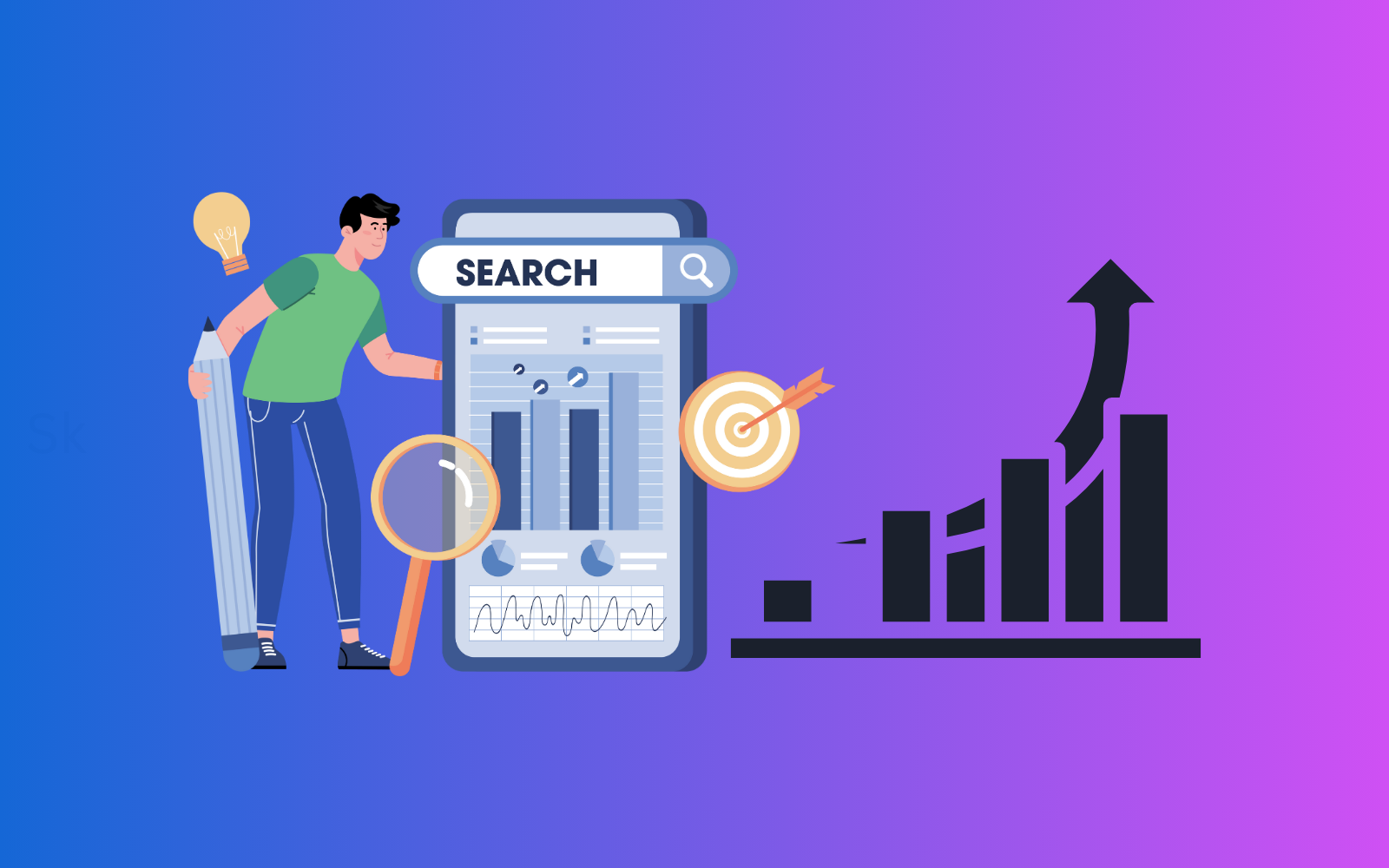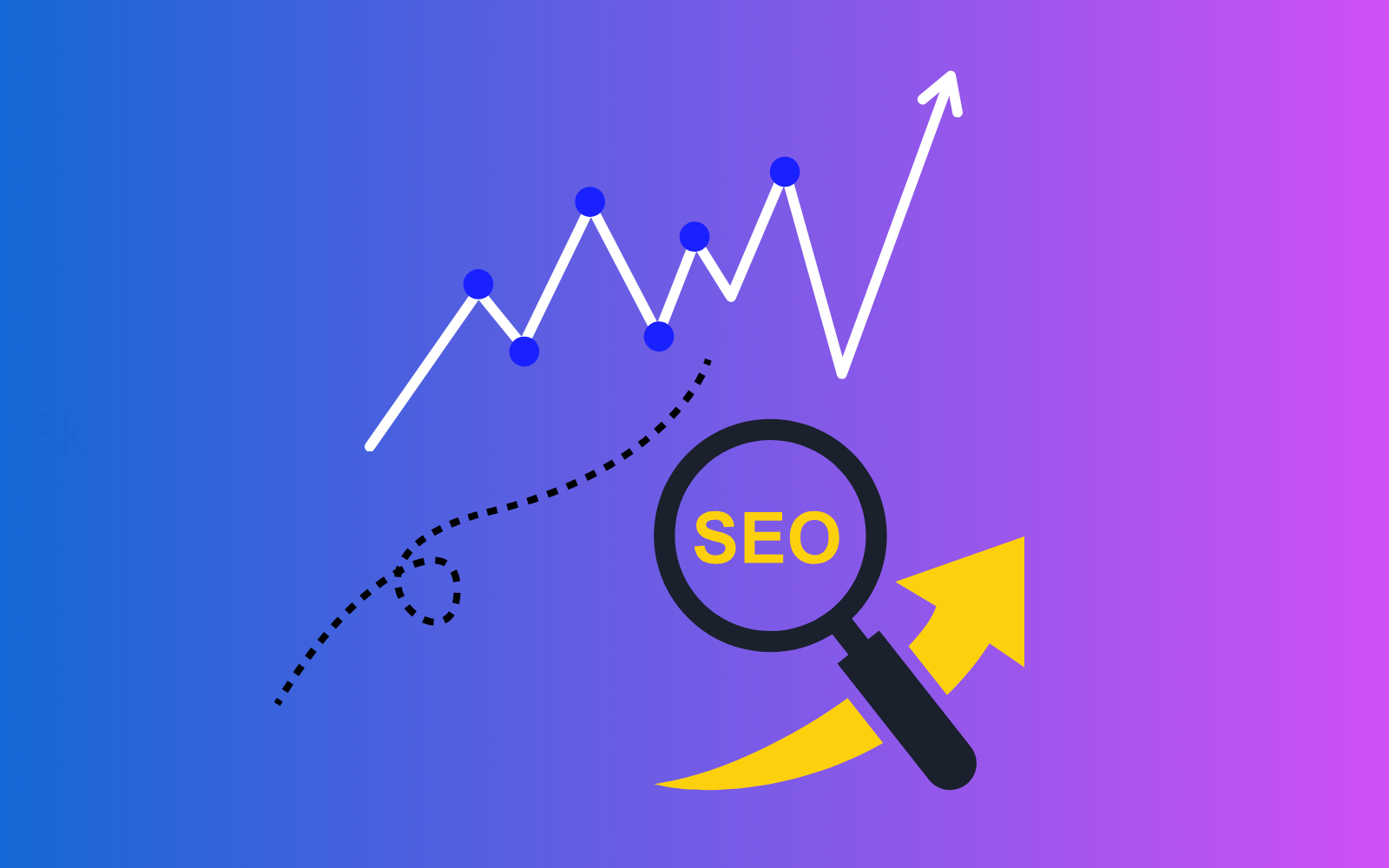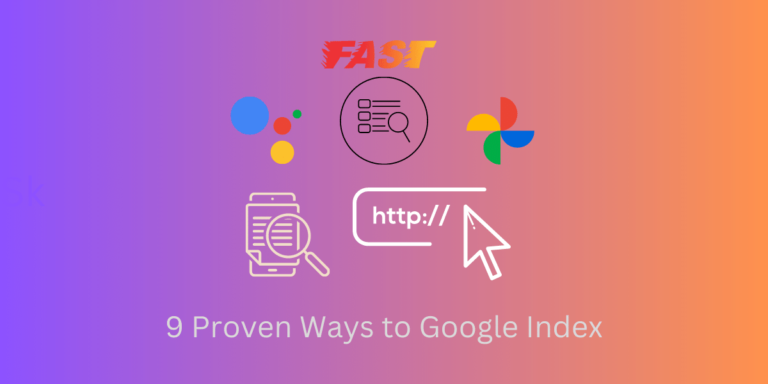How to Rank Higher on Google: A Comprehensive SEO Blueprint

Understanding how to rank higher on Google is essential for any business aiming to increase its online visibility. With millions of websites competing for attention, implementing a comprehensive SEO strategy and effective search engine optimization techniques is crucial.
This comprehensive SEO blueprint will guide you through a few simple ways to improve your Google rankings, boost organic traffic, and outperform your competitors.
Part A: Analyze and Exploit Your SEO Competitors

To outrank your competition, start by analyzing their strategies and identifying areas where you can excel.
1. Utilize Google Search Console (GSC) and Google Analytics
Leverage free tools like Google Search Console (GSC) and Google Analytics to gain insights into your website’s performance. These platforms provide valuable data on search engine optimization metrics, helping you understand how search engines perceive your site.
By analyzing search queries and keyword rankings, you can tailor your SEO strategy to better meet the needs of your target audience. Track SEO rankings and monitor website health through ongoing tracking and analysis.
2. Understand Search Intent and Conduct Effective Keyword Analysis
Identify the search intent behind the queries your target audience uses. Conduct thorough keyword research to find your main target keyword. Start by identifying seed keywords related to your niche.
Use keyword research tools to find low-difficulty keywords that have a reasonable search volume but less competition. Understanding whether users are looking for informational keywords, navigational keywords, or transactional keywords will help you tailor your content accordingly.
Focus on specific keywords that align with your audience’s needs and have low competition to improve your chances of ranking higher. Targeting high-intent keywords can also enhance SEO for lead generation.
3. Optimize On-Site SEO Elements and SEO Landing Pages
Enhance your on-site SEO by optimizing critical elements:
Meta Descriptions: Write engaging meta descriptions that incorporate your target keywords to boost click-through rates from Google’s search results.
Title Tags: Develop informative title tags that are rich in keywords and accurately reflect the content of your page.
Header Tags: Utilize header tags (H1, H2, H3) to organize your content logically.
Internal links for SEO: Incorporate internal links to guide visitors through your site and improve the internal linking structure.
Content outline: Develop a clear content outline for each page to ensure comprehensive coverage of the topic.
SEO landing pages: Design SEO landing pages optimized for specific keywords and user intent.
By optimizing these on-page SEO elements, you can improve your keyword rankings and rank higher on Google.
4. Competitor Analysis: Analyze Top Ranking Pages and Backlinks
Examine the top-ranking pages and competing pages of your competitors to understand what makes them successful. Look at their content quality, keyword usage, and on-page SEO practices.
Conduct a competitor backlink audit to analyze competitor backlinks. This analysis can reveal opportunities for you to create superior content and address gaps in the market. Reverse-engineering competitor strategies can provide valuable insights into effective backlink strategies and content approaches.
5. Address Technical SEO Problems and Conduct a Content Audit
Identify and fix technical SEO problems such as broken links, dead links, slow page speed, and poor mobile device optimization. Ensuring your site is free from broken pages and loads quickly on any mobile device improves user experience and search engine crawling.
Page speed is a direct ranking factor in Google’s algorithm, so prioritize optimizing it. Additionally, perform a content audit to identify outdated or underperforming pages. Update old content to keep your site fresh and relevant.
Part B: Feed the Algorithm with High-Quality Content

Creating content that aligns with search intent and provides value to users is essential for ranking higher.
1. Create High-Quality Content with a Strong Content Outline
Focus on producing high-quality content that provides value to your readers. This includes:
Informational keywords: Target informational keywords to attract users seeking knowledge.
Transactional keywords: Incorporate transactional keywords to reach users who are ready to make a purchase.
Long-form content: Develop long-form content that thoroughly covers topics and keeps users engaged.
Keyword intent: Comprehend keyword intent to align your content with user searches.
Content outline: Use a content outline to organize your thoughts and ensure comprehensive coverage of the topic.
High-intent keywords: Include high-intent keywords to attract users who are closer to making a decision, enhancing SEO for lead generation.
AI tools for SEO: Leverage AI tools for SEO to optimize your content and identify keyword opportunities.
2. Use Specific Keywords and Generate Keyword Ideas
Use SEO tools to generate keyword ideas and identify specific keywords with low competition. Starting with seed keywords, you can expand your list to include low-difficulty keywords that are easier to rank for.
Focusing on low-competition keywords can help you rank higher in search results more quickly. Remember to focus on one keyword per page to maintain clarity and relevance.
3. Optimize Content with LSI Keywords
Add LSI keywords to your content to provide context and improve SEO. This helps search engines grasp the scope and quality of your content, enhancing your chances of ranking higher in search results.
4. Implement Schema Markup
Implement schema markup to enhance your listings in organic search results. Schema markup gives search engines extra information about your content, which can enhance your visibility in search results.
5. Leverage SEO Plugins and Tools
Use SEO plugins and tools to analyze your content and ensure it’s optimized for search engines. These tools can help with SEO title optimization, meta tags, and readability.
6. Regularly Publish Blog Posts and Update Old Content
Regularly publishing informative blog posts can help you target long-tail keywords and engage your audience. Additionally, update old content to keep your site fresh and relevant. Creating content consistently signals to Google that your site is active and relevant.
7. Include an FAQ Section in the Articles
Incorporate an FAQ section in articles to address common questions your audience may have. This can improve user engagement and increase the likelihood of appearing in featured snippets.
Part C: Create an Engaging User Experience

Your website should provide an engaging user experience to retain visitors and encourage conversions.
1. Design Effective SEO Landing Pages
Create compelling SEO landing pages that are user-friendly and visually appealing. Ensure they load quickly on any mobile device to cater to the increasing number of mobile users. A well-designed landing page can significantly improve page traffic and conversions.
2. Optimize Above-the-Fold Content
Place important information and call-to-action elements above the fold so visitors see them immediately without scrolling. This can significantly improve engagement and conversion rates.
3. Focus on Page Speed and User Experience
Improve your page speed to enhance user experience, a critical ranking factor in Google’s algorithm. Fast-loading pages reduce bounce rates and increase page traffic.
4. Utilize High-Quality External Links
Incorporate relevant external links to authoritative other websites to boost your content’s credibility.
5. Address Technical SEO Problems
Regularly audit your site for technical SEO problems to ensure a seamless user experience. Fix issues like broken links and optimize your site for mobile responsiveness.
Part D: Build Authority Through Links and Trust

Establishing authority in your niche is key to improving your search rankings.
1. Engage in Link-Building Efforts with Effective Backlink Strategies
Develop a strategic link-building plan to acquire high-quality backlinks from reputable sites. Backlinks serve as endorsements of your content’s value. Link-building efforts are essential because search engines view backlinks as indicators of your site’s credibility and authority.
Utilize backlink strategies such as guest posting, outreach, and creating shareable content. Consider using link-building automation tools to streamline the process and improve efficiency.
2. Create Content Clusters
Build strong website content clusters by creating multiple pieces of content around a central topic. This strategy enhances your site’s authority on specific subjects.
3. Optimize Internal Linking Structure
Improve your internal linking to distribute page authority and guide users through your site effectively. A well-planned internal linking structure helps search engines discover all the keywords and pages on your site. Incorporate internal links for SEO to enhance navigation and link equity.
4. Follow Google’s Guidelines
Adhere to Google’s guidelines to avoid penalties. Ensure your content is original, trustworthy, and adds value to users. By complying with Google’s guidelines, you increase the likelihood that Google discovers and favors your site in search results.
5. Utilize Google Business Profile for Local SEO
Improve your Google Business Profile to increase visibility in local search results and attract more local customers. Local SEO is crucial for businesses aiming to reach customers in specific geographic areas.
Part E: Continuous SEO Improvement and Ongoing Tracking

SEO is not a one-time effort but requires continuous improvement and monitoring.
1. Track SEO Rankings and Perform Ongoing Tracking and Analysis
Regularly monitor your keyword rankings to assess the effectiveness of your SEO efforts. Use tools like Google Analytics and Google Search Console for ongoing tracking and analysis. This helps you stay informed about your site’s performance and make data-driven decisions.
2. Analyze Competitor Backlinks and Reverse-Engineer Strategies
Conduct a competitor backlink audit to understand where your competitors are gaining their backlinks. Analyze competitor backlinks to identify opportunities for your own site. Reverse-engineering competitor strategies can provide valuable insights into effective link-building and content approaches.
3. Embrace Continuous SEO Improvement
Stay updated with the latest SEO trends and algorithm changes. Continuously refine your strategies, update content, and adapt to changes in search engine algorithms to maintain and improve your rankings.
Summary – How to Rank Higher on Google
By implementing this comprehensive SEO blueprint, you can:
Rank higher on Google by optimizing for both users and search engines.
Enhance your site’s relevance by aligning with search intent.
Improve user experience through high-quality, engaging content.
Build authority and trust with strategic link-building efforts and adherence to best practices.
Utilize tools like Google Search Console (GSC) for ongoing tracking and analysis.
Engage in continuous SEO improvement to stay ahead of the competition.
Consistent effort in these areas will lead to sustained improvements in your Google rankings and organic traffic. Remember, creating content that meets the needs of your target audience and adhering to SEO best practices is key to long-term success.
Frequently Asked Questions (FAQ)
How does understanding search intent improve my Google rankings?
Understanding search intent allows you to create content that precisely meets the needs of your target audience.
By aligning your content with what users are searching for, you increase engagement and satisfaction.
Increased engagement and satisfaction can lead to higher rankings.
What role do meta descriptions and title tags play in SEO?
Meta descriptions and title tags are crucial for on-page SEO.
They provide search engines and users with information about your page’s content.
Well-crafted meta descriptions and title tags that include target keywords can improve click-through rates and visibility in search results.
Why is link building important for ranking higher on Google?
Link building is essential because search engines view backlinks as endorsements of your site’s credibility and authority.
High-quality backlinks from reputable sites can significantly boost your Google rankings.
How can competitor analysis help improve my SEO strategy?
Competitor analysis allows you to understand what strategies are working for others in your industry.
By analyzing competitor backlinks, content, and keywords, you can reverse-engineer competitor strategies and identify opportunities for your own site.
This can inform your backlink strategies, content topics, and keyword targeting, ultimately helping you rank higher on Google.
What are LSI keywords, and how do they affect SEO?
LSI keywords are terms related to your main keyword that help search engines understand the context of your content.
Incorporating LSI keywords improves content relevance and can enhance your rankings by aligning with the way search engines index and retrieve information.
Using AI tools for SEO can help identify effective LSI keywords to include in your content.



